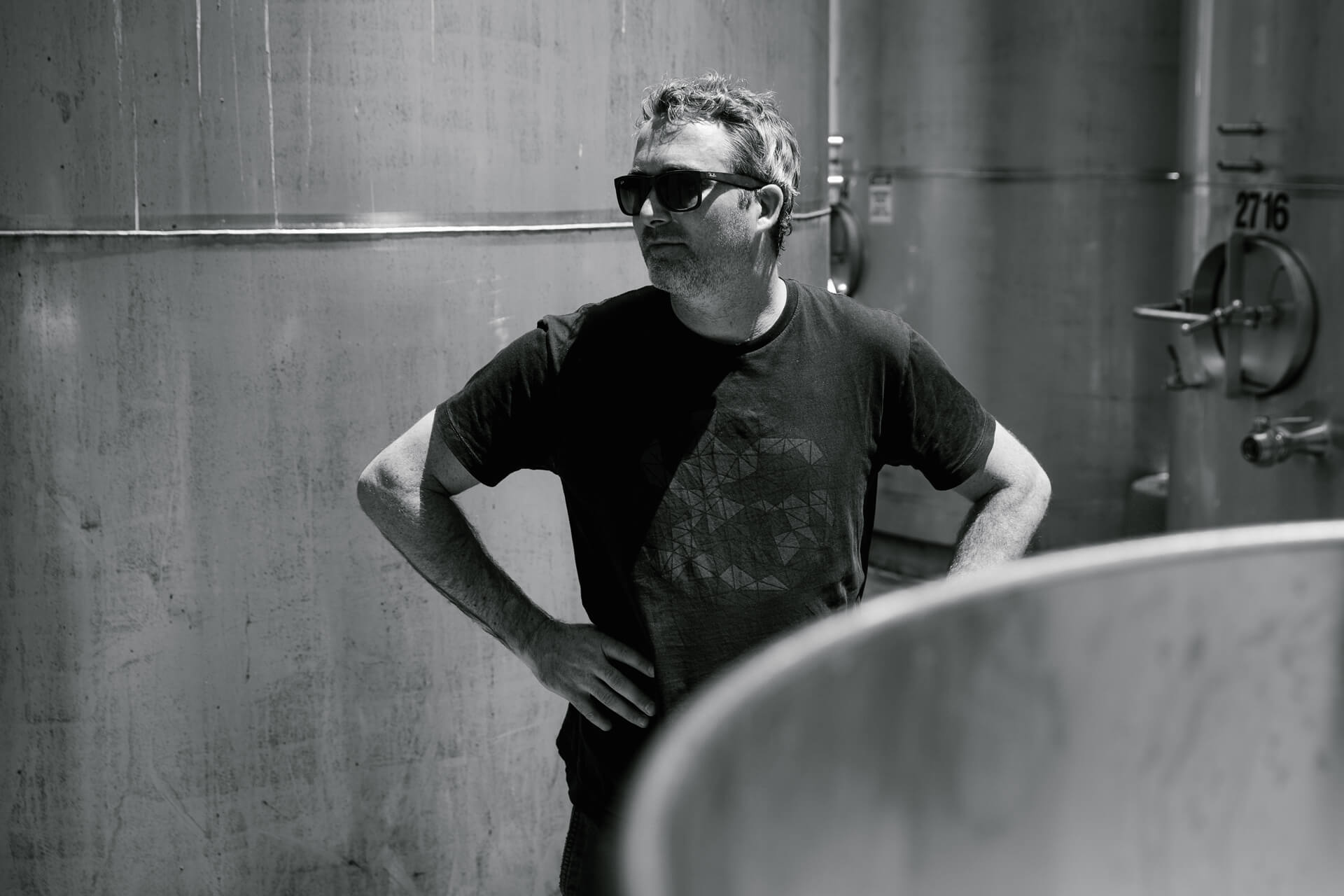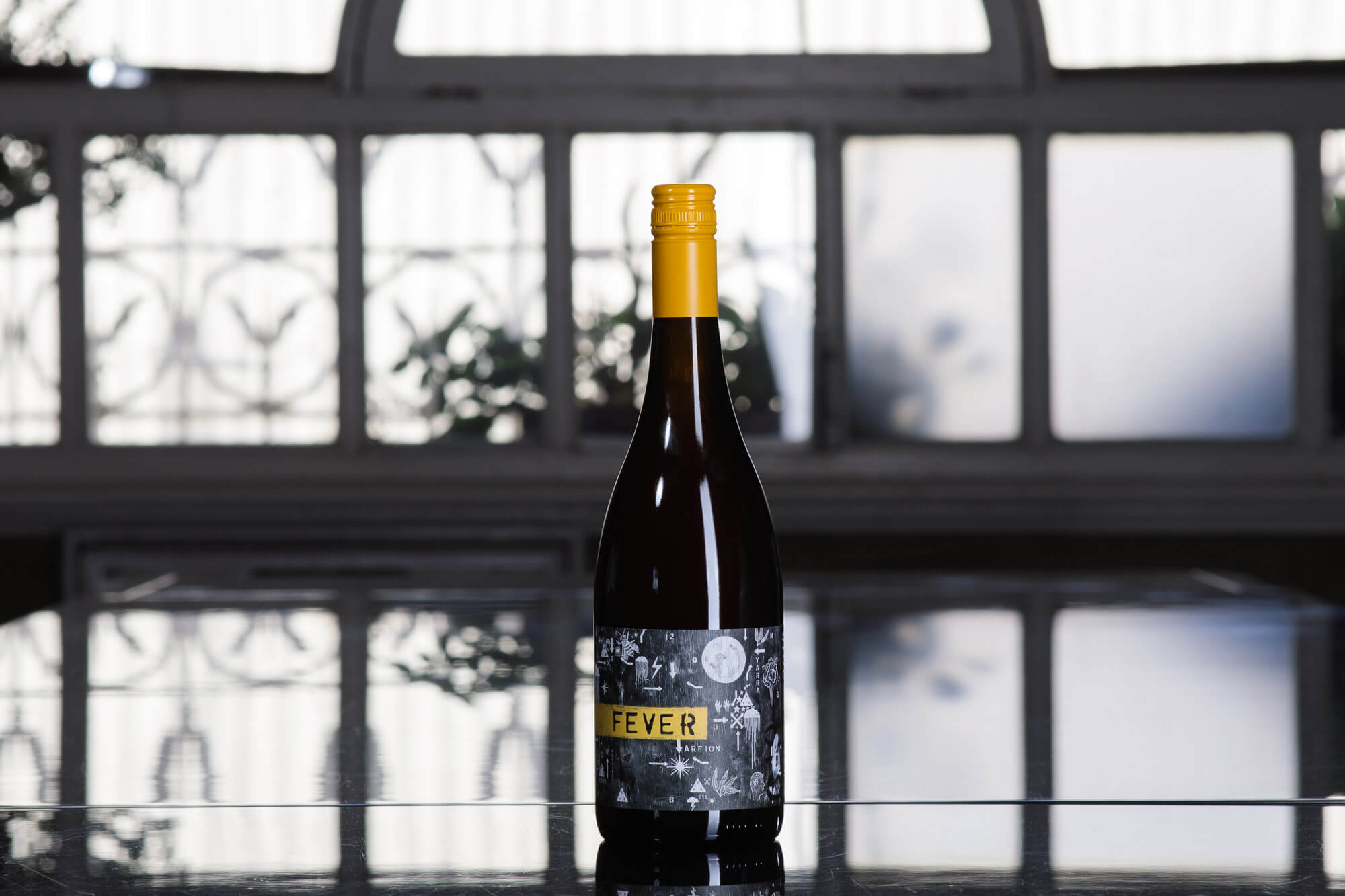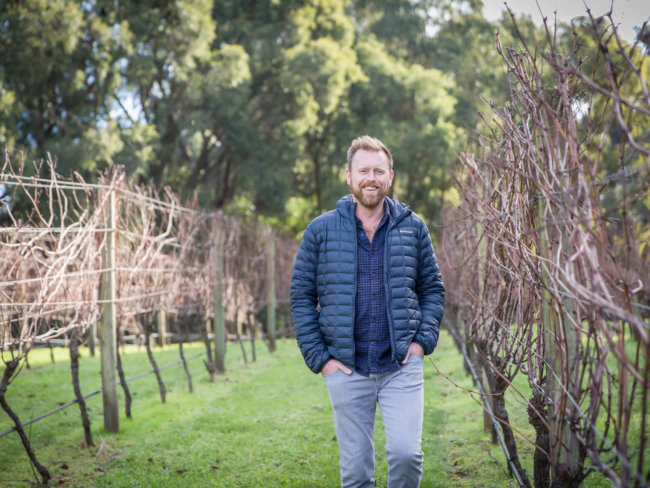After a stint making wine on a more industrial scale left him somewhat cold, Kiwi expat Dave Mackintosh found a second home in Victoria’s Yarra Valley. Launching his Arfion label in 2012, Mackintosh has defied easy description, making pure and classic single-site expressions of pinot noir and chardonnay to fermenting pinot gris as whole bunches and making a pair of savagnin that pay tribute to both the oxidative and non-oxidative styles of France’s Jura region. Mackintosh was a Young Gun finalist in 2013.
Originally from Hawkes Bay, Mackintosh worked at New Zealand’s Oyster Bay during a period of rapid expansion for both Kiwi sauvignon blanc and the winery. Fresh from his studies at Lincoln University, Canterbury, in 2001, Mackintosh went from working for a producer that processed 2,000 tonnes to one that handled something like 20,000 tonnes by the time he left. He had worked his way up to assistant winemaker by that time, and even with the crammed schedule, had somehow managed to sneak in a vintage in Oregon in 2004.
Deciding that the corporate juice game was not for him, Mackintosh crossed the Tasman to work a vintage at the Hunter Valley’s Brokenwood. “This was one of the best decisions I’ve made,” he says. “PJ Charteris and Sarah Crowe picked me up from Sydney, and after about half a dozen beers in the back of PJ’s WRX I was already part of the family and dubbed ‘Davebro’ for the first time. Anyone who has worked at Brokenwood knows how influential it is. It’s like a fine wine university, with Riggsy [Iain Riggs] pulling corks on great wines over massive dinners every night.”
“At Oyster Bay, I was laughed out of the tasting room after mentioning my interest in fermenting a little bit of sauvignon on skins, so the success of that first release was quite amusing to me.”
After vintage and an attempt to resuscitate his rugby career with the Pokolbin Reds, which led to an AC injury and a corked thigh, mackintosh filled in time by picking up shifts for Villa Maria and Montana while he worked out his next steps. Meanwhile, a chat between Charteris and Giant Steps’ Steve Flamsteed at that year’s Len Evans Tutorial led to a winemaking job offer in the Yarra for the 2007 vintage. Mackintosh stayed there through the 2011 vintage, with the region firmly impressing itself on him.
“What I realised quite quickly was that the styles of the Yarra Valley seemed to suit my winemaking and palate. I seemed to be able to intuitively understand the specific sites and what those sites required in the vineyard and winery to get the most out of the fruit. It feels like a natural fit to me, especially the Upper Yarra.”
![]()
Mackintosh’s first wine under his own auspices was while he was still at Giant Steps, and was made in league with Flamsteed. The first chardonnay under their Salo banner was from the 2008 vintage, and the pair employed some skin-contact methods to add character – unusual for the time. The pair still make Salo chardonnay with an ever-evolving experimental edge, and they have also made Hawke’s Bay syrah under the same imprint.
The first Arfion wines came from the 2012 vintage from nine tonnes of Yarra fruit, including a co-picked parcel of chardonnay, pinot gris and sauvignon blanc – a genuine field blend. Mackintosh also launched his Smokestack Lightning range at the same time with a pinot gris fermented as whole bunches. That was somewhat unusual at the time, too, but it made its mark. “At Oyster Bay, I was laughed out of the tasting room after mentioning my interest in fermenting a little bit of sauvignon on skins, so the success of that first release was quite amusing to me.”
![]()
Mackintosh’s Arfion ‘Fever’ wine explores the imprint of skin-contact through multiple white grape varieties.
For Arfion, Mackintosh works with pinot noir and chardonnay, sourcing fruit from across the Yarra, in both regional and single-site bottlings, but has made a considerable splash with pinot grigio, rosé and nebbiolo, too.
On the more experimental side, Arfion’s ‘Fever’ is a skin-contact white made from around six varieties (including pinot noir), but Mackintosh stresses it’s about finding a surprising whole, rather than any of them featuring overtly, with the composition changing at both his whim and that of the season. He also makes two versions of savagnin under the Arfion banner, one under a yeast flor and one in a non-oxidative style.
In general, there are no rules to the making, though Mackintosh favours a minimal-intervention, lo-fi approach. “I want my winemaking to show clarity. A soft, no-nonsense style that shows the vineyard, variety and vintage yes, but also expresses intuitive, respectful winemaking. Hopefully this sends the wine in a positive direction and avoids obvious technique.”







